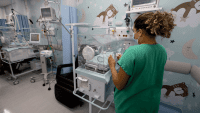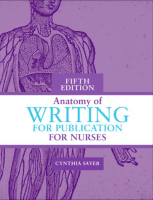I am looking forward to 2007 being another banner year for the American Nurses Association (ANA) as we continue our efforts to advance the nursing profession through policy development and dissemination. As ANA’s President, I am excited about the multiple opportunities and challenges that we face as ANA strives to create a stronger, more equitable healthcare system with registered nurses as the foundation.
In particular, I am very excited about ANA’s new policy conference forums designed to focus on timely policy issues impacting nurses and the nursing profession. The goal of these policy conferences is to bring ALL registered nurses together to directly advise ANA on significant and timely health and nursing topics while at the same time providing an opportunity for continuing professional development and networking. This is an open invitation to all who are interested in building a better healthcare future. I invite you to join ANA with a seat at the policy-making table!
ANA’s inaugural policy conference, Nursing Care in Life, Death and Disaster, scheduled for June 20-22, 2007 in Atlanta, Georgia, is such an opportunity. This conference is dedicated to considering the significant health and disaster preparedness policy questions related to the standard of care provided during a major disaster.
We all witnessed the devastation of Hurricane Katrina. Hurricane Katrina clearly demonstrated what can happen when physical infrastructure is devastated, communication systems are disrupted, and human and material resources are limited. During such times, registered nurses and other health professionals must make difficult decisions. Such decisions may challenge the established scopes and standards of care, professional ethical codes, and other legal and regulatory frameworks that describe the expected standard of care during a non-emergency situation. With your input, ANA will develop guidance dedicated to reconciling the professional, legal, and regulatory conflicts that can occur during such difficult times. The overall goal of this policy guidance will be to improve patient outcomes and quality of care provided during a major disaster.
I look forward to hearing from you, as a conference participant, during dedicated “dialogue sessions” designed to obtain feedback on specific policy questions. In addition, you will have an opportunity to react to a draft report that will be influenced by your input and comments. You will also have the opportunity to interact with members of an interdisciplinary panel brought together by ANA who are subject matter experts.
While focused on examining issues related to the standard of care, you will have an opportunity to discuss the impact of disasters on vulnerable populations, such as the elderly, children, and individuals with special healthcare needs. Hurricane Katrina clearly demonstrated just how vulnerable these individuals are during a disaster. Seventy-four percent of the Hurricane Katrina–related deaths were age 60 and older and half of these were age 75 or older.1 Other topics to be considered will be the national, state, and local disaster response system and discussion on specific types of disasters, including chemical, biological, radiological, natural and environmental, and explosive. Finally, the conference will include practical information for you as a responder—keeping yourself safe and developing a personal and professional response plan.
I am particularly pleased that the Centers for Disease Control and Prevention (CDC) has joined ANA in this effort as a co-sponsor. In addition, distinguished members of ANA’s invited panel include representatives from nursing, medicine, hospitals and health systems, public health, disaster response planners and providers, regulators, and the disability community. Other government participants include representatives from the Department of Health and Human Services’ Office of Public Health Emergency Preparedness, the U.S. Public Health Service, the National Bioterrorism Hospital Preparedness, the Agency for Healthcare Research and Quality, and the CDC. I, along with ANA, welcome all voices.
Please join me by taking a seat at ANA’s policy-making table. Learn more about a compelling topic that has the potential to impact all of us regardless of practice setting or nursing specialty while also providing ANA with your valuable feedback. (To register, go to www.nursingworld.org/meetings/.)
I look forward to seeing each of you this June in Atlanta!
Rebecca M. Patton, MSN, RN, CNOR
President
American Nurses Association
1. The federal response to Hurricane Katrina: lessons learned. Available at: http://www.whitehouse.gov/reports/katrina-lessons-learned.pdf. Accessed January 18, 2007.

















